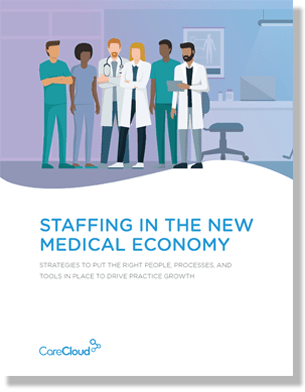In 2007, the Institute of Healthcare Improvement (IHI) first proposed the Triple Aim Model as a way of optimizing health system performance in the U.S. The three goals the model focused on were improving the patient experience, improving the overarching health of populations, and reducing the per capita costs of healthcare.
The IHI believed pursuing all three simultaneously would have a positive impact at all levels of the healthcare system, from individual providers to large health organizations. Of course, every industry pundit has an opinion on how to pursue these aims, but one solution pertains to all three: health IT software.
Today, we look at each individual aim and show how various types of health IT software can help fulfill all three.
Improving the Patient Experience
According to a study from the University of South Carolina, electronic health records have a positive effect on patient satisfaction, which should be expected considering the numerous patient benefits EHRs provide.
Take ePrescribing for example. Rather than patients having to drop off their prescription at the pharmacy and then come back later to pick up their medication, the initial prescription is sent electronically from the point-of-care, so all patients have to do is pick it up when it’s ready.
Also, most of today’s better EHRs come equipped with a patient portal. Portals provide a secure means for patients to communicate with their provider, view lab results, and schedule appointments at their convenience. Basically, they give patients what they want, when they want it.
Improving Population Health
EHRs are often touted for their ability to benefit individual patients and physicians, but they also help on a much broader scale. Currently, much of the information being gathered by EHRs is being organized into large data sets that will be used to influence population health.
Initiatives like Meaningful Use, which require physicians to send electronic data to immunization registries, are providing a push toward regional health data as well. Physicians are using regional data to help decide the best treatment options for their patients, and community organizations are using this data to create more effective health initiatives.
Reducing The Costs of Healthcare
Electronic claims filing software is helping both physicians and payers save money.
For physicians, it only costs $2.90 on average to file an electronic claim but $6.63 to file a paper claim. Practice management systems equipped with code scrubbing and payer rules checking abilities ensure physicians get paid the maximum reimbursement the first time around.
On the payer side, electronic claims submission takes many of the inefficiencies of paper like high costs and slower processing out of the equation. Electronic claims have allowed payers to streamline staffing and speed up processing.
The Triple Aim Model is an earnest attempt by the IHI to identify the needs of the healthcare system. Luckily, we now have the technology to make it a reality. By adopting health IT software, practices will lay a stronger foundation for the healthcare industry as a whole.


